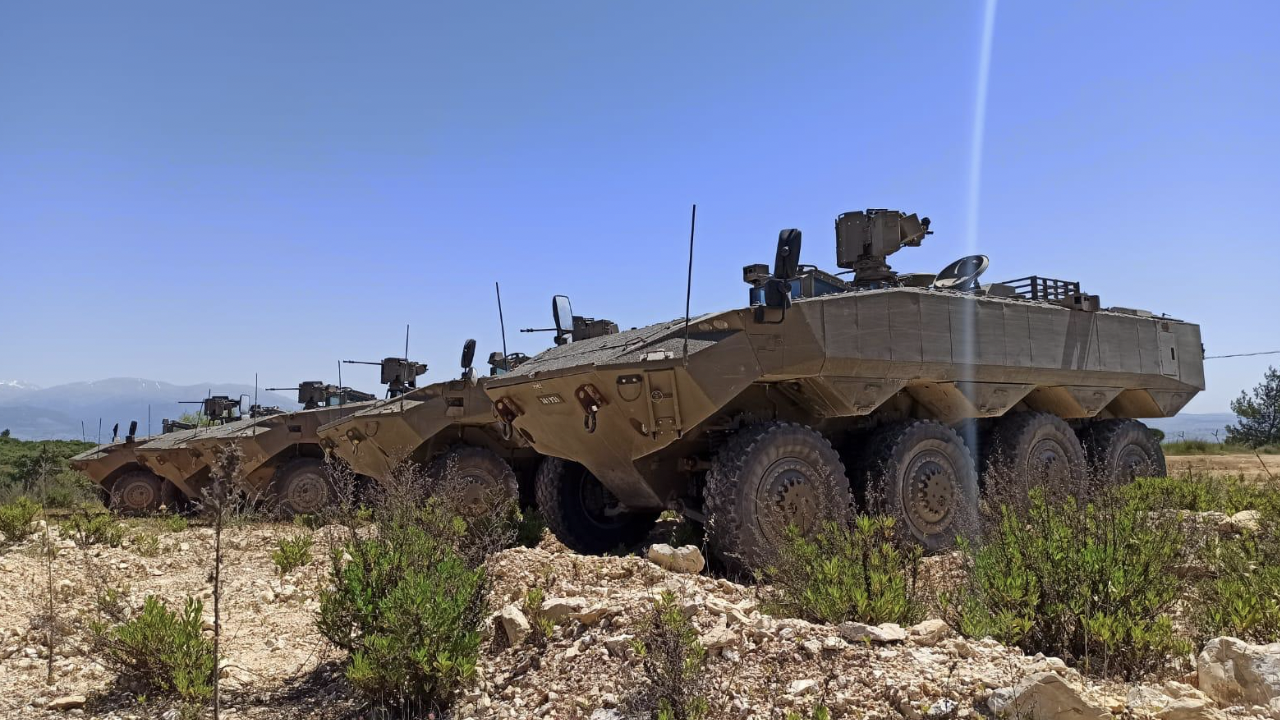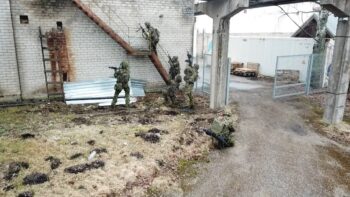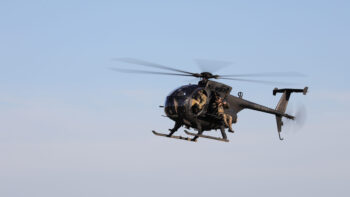
The first Eitan APCs were delivered to an Israeli infantry brigade in May 2023. (IDF)
JERUSALEM — In 2020, Israel launched a new military doctrine and modernization effort commonly referred to as the “Momentum” plan. The concept relies on a rapid war of maneuver, blending quick strikes and the highest technological capabilities the IDF can bring to the front.
The grinding war in Gaza — four weeks of aerial bombardment followed by the slow taking of territory — resembles nothing like what was laid out in that 2020 document. Instead, Israel’s response to the Oct. 7 attacks has relied heavily on classic military tactics and, in some cases, older military hardware that the developers of Momentum expected to consign to history.
Tehilla Shwartz Altshuler, a senior fellow at the Israel Democracy Institute and an expert in law and technology, recently excoriated the over-reliance on tech by Israel, calling it a “disastrous” love affair in a Nov. 9 article. “Over the last 20 years, the IDF has undergone an extensive process of technologization as part of the global technological revolution,” she wrote. “When technology replaces humans, it comes at the cost of dulling human intuition and research capabilities and a disconnection between human soldiers and the battlefield. All of these factors played some part in the disaster of October 7, 2023, as did the government and military’s addiction to the feeling of technological superiority.”
The campaign in Gaza illustrates the challenges that militaries continue to confront as they incorporate advanced technology onto existing platforms. For instance, while Israel has used artificial intelligence and big data to identify targets, the automated tools still require a large force on the ground to carry out the campaign. Efficient use of strike cells and closing sensor to shooter loops faster can have an impact, but the pace of the campaign shows that overall the change may be incremental.
Israel has resorted to calling up hundreds of thousands of reservists. It also used the air force for weeks of air strikes and then sent two divisions into Gaza, including infantry brigades, combat engineers and naval commandos backed by artillery.
Which doesn’t mean Israel’s investments in high-end capabilities have been absent from the battlefield. Far from it, in fact: While the IDF and Israel’s defense industry have avoided putting out statements about new systems being used, conversations with sources, as well as open-source photos and videos, have made it clear that some of Israel’s newest technologies are at the forefront of the Gaza activity.
So, what is being used?
On the ground, Israel has deployed the Eitan APC. The IDF put out a photo on Nov. 5 showing the APC in the field. It was delivered this year to the IDF, and Nahal brigade units, such as the 50th battalion, have been training with it. It’s not clear if the Elbit Systems Iron Fist active protection system, which is supposed to be integrated with the Eitan, has been used in Gaza, where small Hamas drones and rockets are a threat to IDF forces.
Only a handful of Eitans appear to be available to the IDF right now, because it takes time to train soldiers on them and they need to be integrated with their weapon systems. More common has been the Namer APC, which was first produced in 2008. The Namer’s use was expanded to more units in the Givati and Golani brigades in 2017, with an un upgraded Namer introduced in 2023. The drive to produce the Namer and the Eitan came in response to the vulnerability of older M113 APCs; nevertheless, older M113s are still being used and have been seen in the Gaza border areas since the war began, another sign that the conflict is relying on mass as much as capability.
Many armored vehicles in Gaza are equipped with the Trophy active protection system, produced by Rafael. However, in at least one case, it appears the system did not work as expected, with Israel’s Ynet reporting that a Namer APC was hit by an anti-tank missile. “Although the investigation into the incident is still underway, it has been established that the Trophy active protection system equipped on the advanced and heavily armored vehicle malfunctioned and failed to intercept the missile,” the outlet reported. A further examination of the incident asserted the incident was particularly deadly because the ATGM hit another munition at impact. Of note, cages to protect armored vehicles have been seen in photos, despite the availability of modern counter-UAS systems.
Weapon-wise, Israel is using Rafael’s Spike systems, as well as the Matador, which can carry an anti-tank or anti-structure warhead. A photo of the system, which has previously been deployed, was released by the IDF. In addition, the Iron Sting mortar system, developed by Elbit Systems, is being used with the IDF’s Maglan unit. It fires a 120mm mortar that is then guided to the target to increase precision. It was first used in the current war in Gaza.
Israel’s multi-layered air defenses are also being challenged in this war. More than 9,500 rockets have been launched from Gaza dozens of rockets have been launched from Lebanon, and a handful from threats have been launched from Syria and Yemen during the first month of war. The IDF Home Front command updated its siren warning app for smart phone users on Nov. 7, illustrating the way apps for civilian use are knitted into the advanced warning systems Israel uses.
Israel also used the Arrow air defense system at least three times in 40 days of combat. The latest interception was on Nov. 9 of a threat from Yemen, the first operational use of the Arrow 3. Israel also scrambled F-35s to down a cruise missile launched from Yemen, the first time an F-35 has been known to be used for that mission.
The Sa’ar 6 new Israeli corvette was used for the first time in this operation, according to Israeli media. It has a variety of new systems such as a naval version of Iron Dome and new missiles. The new Spark drone, based on the Aeronautics Orbiter, is being used in Gaza, which may be its first use in combat. Other drones such as the latest IAI Heron models and the Elbit Systems Thor and Magni drones likely being used as well, although neither the company nor the IDF would confirm details on deployment.
The Momentum Plan was part of a framework to push technology to the frontline and bring more types of technology, including from the civilian world, into the IDF. Many of the systems noted above were in the works before Momentum. However, knitting them together on the battlefield, with new units and new types of fire control, is supposed to make them more effective.
Oct. 7 was a nadir in terms of technology’s ability to stop threats, but with the IDF now fully deployed it has a chance to utilize the technology in its own time and place.
Eight ‘capability coalitions’ are rushing arms to Ukraine. Here’s who will donate what. (EXPLAINER)
NATO has established eight different capability coalitions designed to get critical systems or ammo into Ukrainian hands quickly. Here’s a deep dive into how they’re all faring.


























